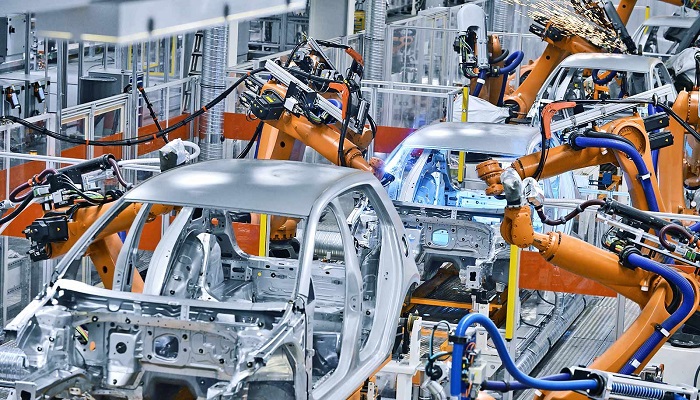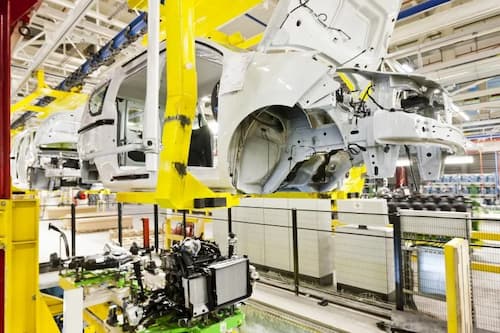Auto Manufacturers' Raw Materials
Nov 11, 2023 By Triston Martin
Automobiles require several essential raw materials to manufacture. This includes glass, aluminum, and iron ore used for making steel. After the raw materials are extracted from the earth, they're transformed into components that automakers or auto part companies employ in the assembly process. Automobile manufacturers are one of the world's biggest consumers of raw materials.
A Lot of Automobile Parts
A vast array of components are used to construct a car. Apart from the components (engines and transmissions), there are interior components like seats, instrument panels, HVAC units, and wires that are required to connect them all. Through the years, the materials used to construct these components have changed; however, most of what is inside cars remains the same. Primarily, raw materials are extracted, or mined, out of the ground. After that, a raw materials production company converts those raw materials into products that automakers can utilize in their production.
Steel
Steel is made of iron ore and is the most used component for auto manufacturing. On average, 900 kg of steel is used in each car. Steel is used in the construction of the chassis of a car and its body, as well as roofing, body, door panels, and beams between doors. Steel is frequently utilized in exhaust pipes. Modern technological advancements allow automakers to use various steel types with different levels of rigidity.
Plastics
Petroleum is the primary source of various plastic components found in automobiles. Chemical companies convert leftover petroleum into synthetic plastic. Plastics compete with steel to be the most prominent component of auto manufacturing. The typical automobile is constructed from 151 kilograms of plastics and composite materials. They account for 8 percent of the vehicle's volume and 50% of the number of materials. Plastics' flexibility, durability, and light weight make them a great material for many components.
Aluminum
Aluminum is being increasingly utilized in automobile manufacturing because of its malleability and lightweight. In 1975, only 84 lbs of aluminum were employed in the standard automobile, and that number was predicted to rise to 466 pounds in 2020 and 565 pounds by 2028. Wheels are typically made from aluminum.

Rubber
It is essential to the automobile, and the auto industry is crucial for the industry of rubber. Tires are among the essential components of an automobile. Rubber is also utilized for making a variety of seals, belts, and hoses essential to the operation of an engine. Similar to plastic, it is strong and can easily form various shapes. Natural rubber demand is expected to grow to $33.87 billion in 2027, an increase of over $28.65 billion in 2019 and the automotive industry taking up 65.3 percent.
Glass
Currently, glass is utilized in navigation screens, backup cameras, and mirrors inside your vehicle. Glass helps the driver get better visibility of their activities and where they are. The windshields are made from laminated glass. Glass laminates ensure the best safety standards, particularly in a collision. Lamination involves placing an extremely, very thin film of vinyl in between the two glasses. This will ensure that there's no shutter when glass breaks.
Fiberglass
The majority of people believe that fiberglass and glass are the same materials. But this isn't factual. Fiberglass is composed of thin glass strands. It's mostly air but not glass. When the glass is wrapped into small sheets and resin is sprayed on it, lighter objects can be created. Fiberglass provides a variety of advantages in the automobile industry. It is not corrosive, which means it is a great alternative to steel in places where steel could easily be corrosion-prone. It is also fireproof. If there is an accident, the user can get out of the vehicle without injury. It is used for doors, front bumpers, roofs, casings, roofs, and even wheels.

Conclusion
From fibers to metals to the sand and quartz used to create glass, auto manufacturing uses the rawest ingredients than any other manufacturing industry. Since the first time it invented the assembly line method in the early 1980s, the automotive manufacturing industry has been an innovator in mass production, and the ability to adapt its use in the raw material is an essential aspect of its growth.
-
 Banking Feb 25, 2024
Banking Feb 25, 2024Debt Snowball Vs Debt Avalanche: An Overview
The debt snowball vs avalanche techniques are two of the most common and effective ways to pay off your debt.
-
 Know-how Feb 15, 2024
Know-how Feb 15, 2024World's Top 4 Most Essential Steps For Developing A Financial Plan In
Whether for a trip, our kids' futures, or the purchase of a yacht, we spend our entire lives planning and organizing. To put our plans into action, we need to establish our goals, collect the necessary data, build a plan, and finally, show that we are willing to compromise. Furthermore, a lot of financial planning will have to be done so the plans can be carried out properly. An effective financial plan is more likely to be created if you stick to a five-step process.
-
 Taxes Oct 15, 2024
Taxes Oct 15, 2024Defend Your Finances: 8 Essential Tips to Avoid Tax Scams in 2024
This article provides detailed strategies to safeguard against tax scams, highlighting preventive measures and best practices to secure financial information.
-
 Know-how Nov 23, 2023
Know-how Nov 23, 2023Modifying Interest Rates: The Role of Central Banks
The Federal Reserve is responsible for monetary and exchange rate stability. The Federal Reserve has options to tailor its monetary policy to the government's fiscal strategy. Encourage economic and employment growth by adjusting the discount rate, disseminating information and data, and managing and governing the nation's currency.
